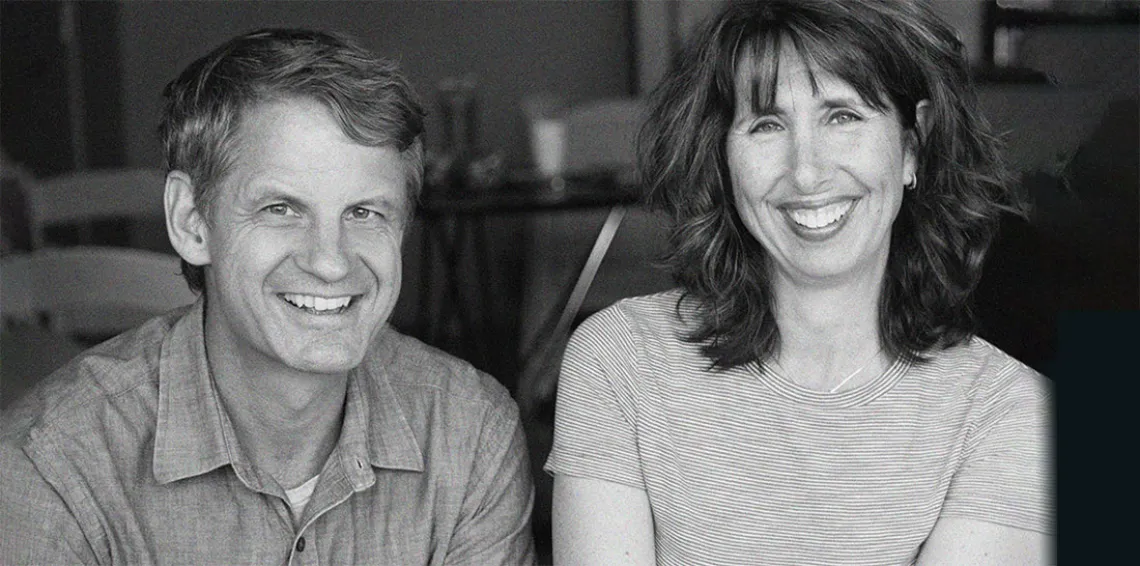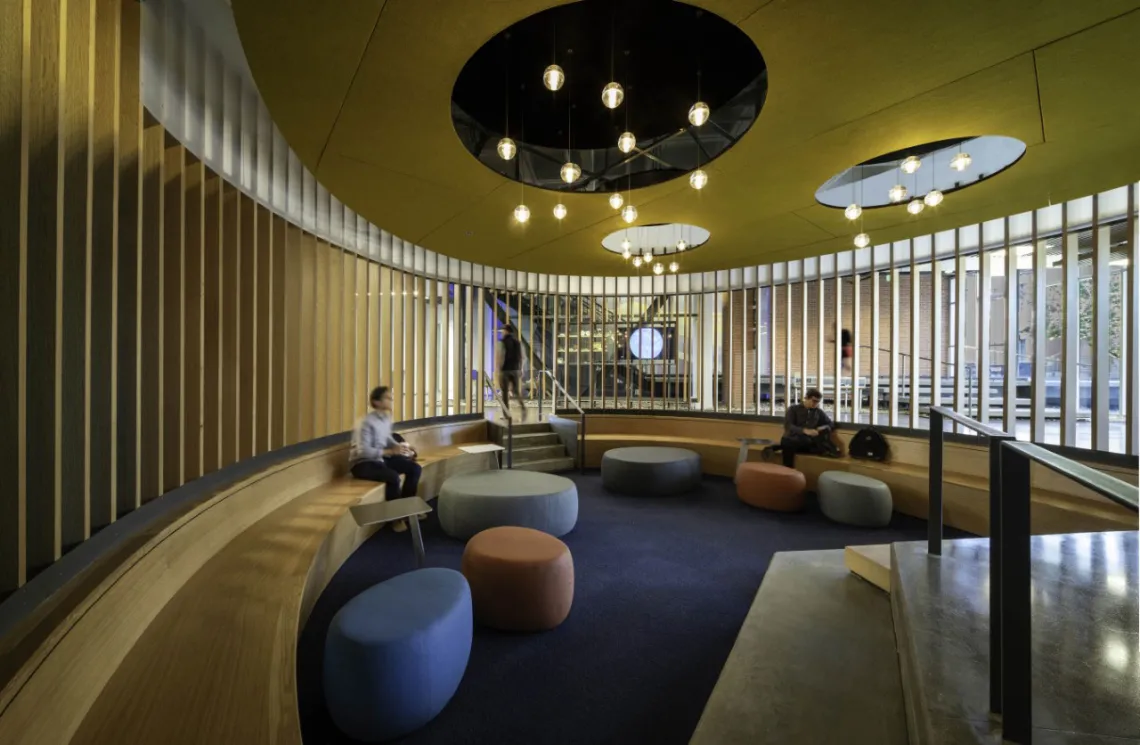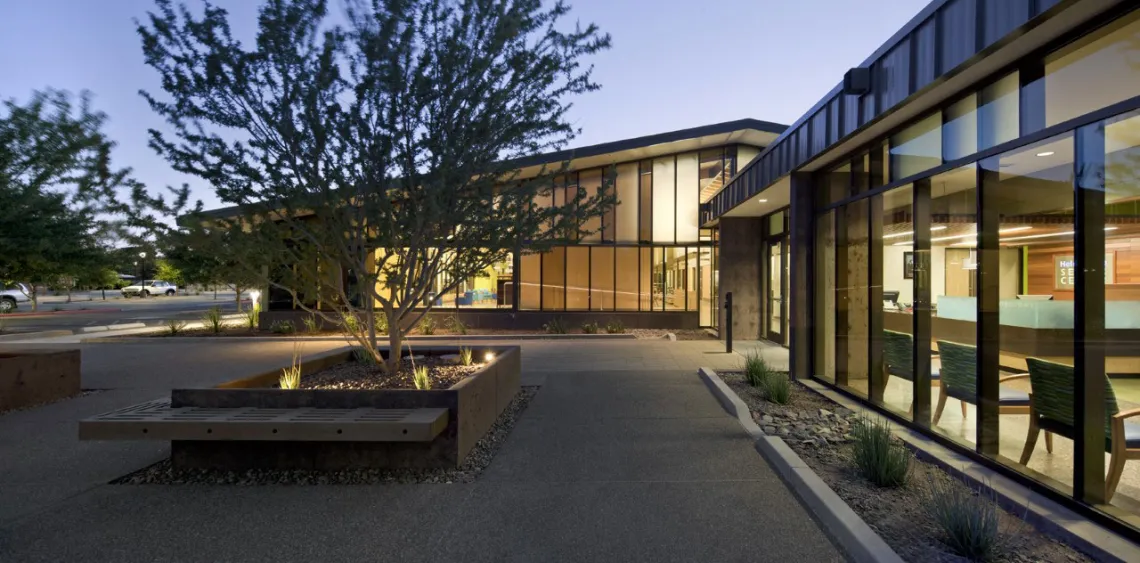Blueprint for Entrepreneurship: Innovative Architect Diane Reicher Jacobs ’88 B.Arch on Starting Your Own Firm
"Maintain the spirit of fostering talent in others that you do within yourself, and you will find an agile group of people inspired to do their best work."

Michael Jabos 86 B Arch and Diane Reicher Jacobs 88 B Arch.
Diane Reicher Jacobs ’88 B.Arch left behind a successful trajectory in corporate architecture to start Holly Street Studio in 1999. The grand experiment of starting a practice from scratch was infused with sheer determination to strip the process and allow for more space to (in essence) create space. The very act of robust project definition ahead of time, collective problem-solving and building ideas around engagement with multiple contexts—social, institutional and physical—was sorely lacking in some of her earlier experiences.
She used this opportunity to challenge both the thinking and delivery of architecture and, along with her partner Michael Jacobs ’86 B.Arch who joined in 2002, grew the firm’s portfolio with dozens of award-winning projects for clients as diverse as the City of Phoenix, Southwest Center for HIV/AIDs, Arizona State University and Maricopa Community College District.

Conversation Pit, Phoenix College Physical Science Building: In keeping with client’s desire to promote social interaction among STEM students, faculty and the local community, Holly Street Studio created a partially recessed conversation pit for quiet study, gatherings and small lectures at the building entry lobby, with details inspired by the original Ralph Haver building design.
Photo by Matt Winquist
Here she offers a few thoughts for architects and others striking out on their own:
1. Know Yourself
Bring your full self to the table—not just skills and experience, but identity and values, an open mind and consideration of what you see in plain sight. It is there that the inspiration kicks in and opens a world of possibility for connection with clients, revelatory circumstance and clarity of solution. Your work is best when it is a synthesized expression of multiple goals, but from a grounded, confident perspective. Build your work around that rather than trying to assume someone else’s identity or sensibility. Never underestimate your own or others’ innate gifts. Work hard to find them, and acknowledge and nurture them along the way. This sets off a pattern of high contribution and rewarding outcomes—not to mention close-knit colleagues and happy clients.

Entrance Courtyard, City of Phoenix Helen Drake Senior Center: Working closely with the Center’s Senior Advisory Committee, Holly Street created an exterior safety and transition zone that doubles as an outdoor performance space. The interior stage seen in the center of the image opens to face the neighborhood for the center’s active performance and event schedule.
Photo by Bill Timmerman.
2. Build A Great Team
Once you realize where your strengths are, gather the smartest, wisest, most passionate people around you and build a team with balance in mind. Maintain the spirit of fostering talent in others that you do within yourself, and you will find an agile group of people inspired to do their best work. As creative professionals, we are not one-size-fits-all, even if we are trained in similarly or have shared values. Our differences create resilience and strength. This where diversity comes in—excellent teams not only encompass complementary skills but varied perspectives as well. Watching ideas unfold under an assortment of experiences is nothing short of magical. Firms that miss out on this are missing a lot. These skills, this collective asset, is necessary every single day to maintain stamina and excellence in the high-stakes enterprise that is the practice of architecture.

Campus Gateway, MCCCD Phillip D. Randock Automotive Technology Center: Glendale Community College’s ATC provides hands-on education for the automotive industry while archiving and celebrating past innovations and achievements. The building’s main entry space serves as an indoor/outdoor exhibit gallery and research library as well as a beacon for the north campus entry point.
Photo by Bill Timmerman.
3. Create an Atmosphere of Growth
It’s tempting to seek predictable patterns, walk along paths of least resistance and stay within the comfortable limits of our knowledge base, methodologies and technical skills. Our work—anyone’s work—rarely has impact without embracing new, sometimes risky opportunities and change. Accept the challenge of lifelong learning and remain curious and confident that you can continue to evolve professionally regardless of years of experience. Do not delegate all that is novel to the next generation. Make the commitment to ask uncomfortable questions, blend new knowledge with old lessons and grow from every experience. Chances are this will inspire you to design beyond your own expectations, build ideas and buildings never imagined and find yourself in the company of rich thoughts, a table full of good friends and perhaps even a portfolio of projects of which you can be quite proud.
Diane Reicher Jacobs received the Arizona Architect’s Medal in 2016 and was named CAPLA’s Alumna of the Year in 2017. Holly Street Studio was awarded AIA Arizona’s Firm of the Year in 2017, and received NOMA’s National Honor Award for their Phoenix College Science Building in 2018. The office employs a diverse array of talented architects who build each project around the daily push-and-pull of debate and conversation, as well as Friday afternoon tacos at Crescent Ballroom in downtown Phoenix.



